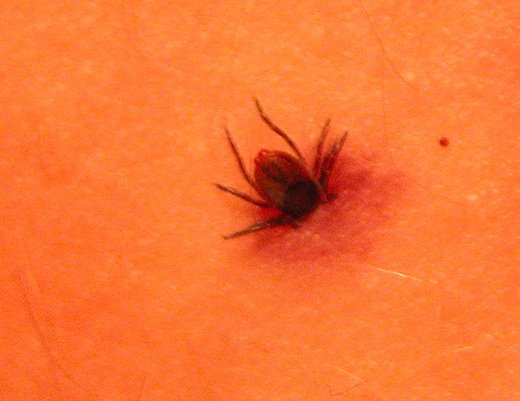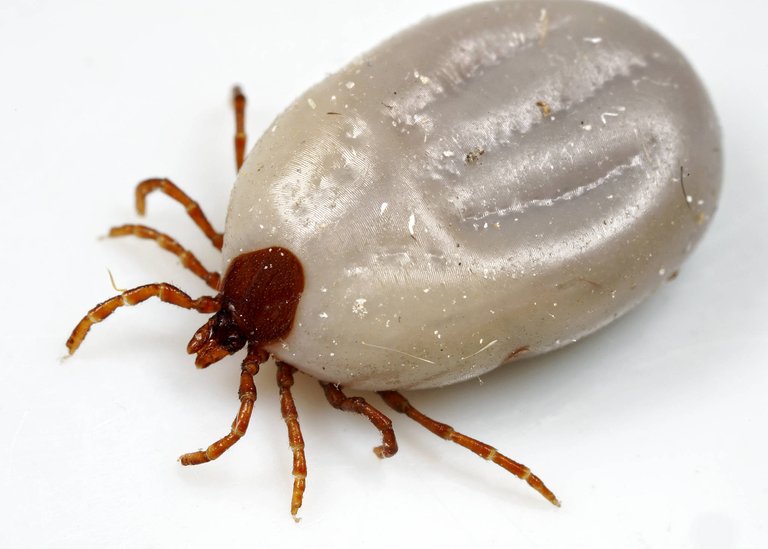How Lyme Disease Can Affect Pet Owners.
Lyme disease is a type of third-party disease, you know the disease type that you do not get directly from the host, that's what I am talking about. Lyme disease is caused by the bacteria; ''Borrelia Bacteria'', humans can get it through the bite of a tick carrying the bacteria.
Lyme disease is common in the upper Midwest, northeastern, and mid-Atlantic states, its presence is not also far-fetched in Europe, Southeastern Canada, and South Central. So, when you stay in places highly prone to ticks, not only are your pets affected, you stand a chance of getting an infection yourself.

Image Credit
Here is how the transmission of disease happens.
When there is a tick bite on an animal carrying the bacteria that causes Lyme disease, the tick then transfers the bacteria to a human through bites. Ticks do not fly, they are different from mosquitoes, they gently climb onto clothes or skin, then they bite into the skin and begin to feed on blood.
There is most likely going to be a Lyme disease infection if the tick gets attached to the skin beyond 24 hours, yes, their bites are not painful, so you may not be able to tell that you have one attached to your skin for that long period.
A tick bite may not look like so much could just have the appearance of a tiny, itchy, bump on your skin like a mosquito bite, a lot of people may not even notice they've got a tick bite. The occurrence of Lyme disease happens in stages, but the symptoms of each existing stage could overlap.
The first stage of Lyme disease usually happens within 3-30 days after the bite, this stage comes with highly limited symptoms, generally called; "Early Localized Disease". Usually signified with a rash forming in a single circle, slowly spreading from the site of the tick bite, and getting clear at the center looking like a bull's eye.
The rash usually feels warm when touched, but is neither itchy nor painful. Associated symptoms include; Headache, fever, joint stiffness, swollen lymph nodes, extreme fatigue, as well as muscle aches and pains, which are other associated symptoms that come with stage one Lyme disease.

Image Credit
The second stage of the disease is a worse case, with symptoms showing up at week 3-10 weeks after bite, this is usually a more serious and widespread stage, called disseminated disease.
- Neck pain/stiffness of the neck.
- Muscle weakness on one side or both sides of the face.
- Pain, weakness, and numbness of the hands or feet.
- Rashes on other body parts.
- Painful swelling in tissues of the eyelid and eye.
- Pain or vision loss in the eye due to the immune system activity in the eye nerve.
- Pain that would often begin from the hips and back, then later spread to the legs.
Then, we have the third stage of Lyme disease which is related to disseminated disease. This stage is usually connected with arthritis in large joints, especially the knee region, resulting in swelling, pain, and stiffness which may last for a very long time. This stage begins 2-12 months after the tick bite has happened, sometimes even showing up as a skin infection after several years after the tick bite has happened.
Diagnosing and treating Lyme disease on time is crucial, antibiotic treatments are administered to help patients feel better, but even after treatment some patients still report episodes of fatigue, pain, or difficulty thinking even after the treatment for Lyme disease is complete.
This means, more research still needs to be carried out as regards treating and managing Lyme disease. Pet owners need to ensure their pets are free from ticks, not just for the sake of the pets alone but for the sake of their owners as well.
Thanks for your contribution to the STEMsocial community. Feel free to join us on discord to get to know the rest of us!
Please consider delegating to the @stemsocial account (85% of the curation rewards are returned).
Thanks for including @stemsocial as a beneficiary, which gives you stronger support.